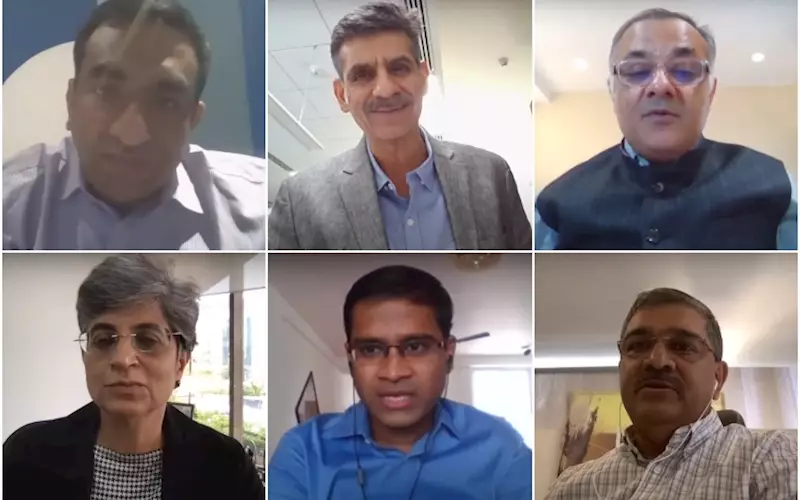How to drive food consumption trends into opportunities
Experts at FICCI's Foodworld India said that food brands are driving the consumption trends and opportunities. India's food processing industry has a promising future to devise innovative models to take the sector forward
28 Mar 2021 | By WhatPackaging? Team
Moderator: Rachit Mathur, MD and partner, BCG India
Panellist:
Hemant Malik, CEO- Food Division, ITC
Mohit Anand, managing director, Kellogg India and South Asia
Richa Arora, president-packaged foods, Tata Consumer Products
Piyush Patnaik, MD-consumer business, Cargill India
Sanjay Sharma, CEO, MTR Foods
Rachit Mathur (RM): USD 600 billion is the incremental growth of food consumption projected in India over the next decade. A significant portion of this (USD 130-220 billion) is going to come from the branded packaged food industry. This is twice the size of the current size of the industry.
How is the situation now?
Hemant Malik (HM): There was a 20% drop in the quarter after lockdown mostly in the out of home and restaurant space. In the latest quarter, we are back to where we were. But certain other headwinds are coming in terms of inflation and pricing of commodities and packaging materials.
Piyush Patnaik (PP): Household consumption is back, but out-of-home is still 60-70% down from pre-Covid levels. Inflation is a real danger. We have never seen baseline prices for edible oil go up by 60-70% in a year.
Mohit Anand (MA): At a consumer level, what really matters is nutrition, taste, convenience and value. Health and wellness trend is only going to heighten and Covid has further enhanced it. Even though people's income has gone down, due to them staying at home, discretionary spending has gone down and saving has gone up. This has led to spending on in-home and health and weaning products. The out-of-home has shifted to in-home. We are not eating less. We are eating at home. Convenience and DIY are increasing. As people can't go to restaurants, they are experimenting with what they can do at home.
Richa Arora (RA): In the past, people just talked about health rather than doing something about it. Covid has nudged them to act on it. The rate of conversion from unbranded to branded in staples has accelerated to almost three-fold. Even though the category as a whole has remained flat, the branded players have grown. For example, we see a 4-5% conversion in spices from unbranded to branded in a year. Similarly, we have taken up poha, which is largely unbranded (95%). This acceleration offers an opportunity. Digital access in vernacular has accelerated how we consume media, eCommerce and digital payments. Our eCommerce sales share doubled (2.5% to 5%) in the past 12 months. In search of nutrition and building immunity, people are also showing renewed interest in traditional Indian foods.
Sanjay Sharma (SS): We were able to leverage the convenience factors greatly and had an excellent year both in terms of topline and bottom-line. By staying at home, more meals were prepared at home and it put pressure on the homemaker. Convenience has many dimensions; one being ensuring less time is spent in the kitchen, and next is variety, as we don't want to make the same meals over and over. There is also a knowledge gap with many millennials who don't know how to cook. Another dimension is indulgence. With Covid, we no longer want to buy from the corner shop. While a lot of focus is on health and wellness, indulgence on the other hand, has also exploded.
What is the thinking around repositioning products and marketing messages?
HM: People are questioning what you are putting in your packs when you look at eCommerce. Customers need information. But in terms of product positioning and messaging, we will have to take it by brand. We recently launched liquid milk in Kolkata where we provided a daily milk report card over WhatsApp and there were a good number of hits. On the juice segments, we decided to source fruits only from India and positioned the brand that way.
MA: Since immunity is a trend, every brand should pivot its messages around it. Some brands, for example, tea, have done that and people believe in it, but you can't do it everywhere or you stand to lose credibility. Brands cannot change much of their core, but they can play with insights. If they find something in the consumer's environment, which the brand can resolve, they can try to address it. Most marketers should stick to the core and understand what can be done around it. Else, it can lead to a dangerous path.
How is the situation at the back-end now?
PP: We’re not seeing any major risks on the supply side. The resurgence of Covid is a worry though. Inflationary trends on globally connected commodities are going to continue.
RA: Some lessons we learned were salt, which has a more distributed supply chain, were better off as we could move material at a cost even if some other places had restrictions. Whereas spices, which is restricted to Kerala – which has central distribution – has problems where we practically ran out of supplies. The second is automation. When Covid put stress on the availability of labour, we had to rely on automation. I would say more and more automation is the way to go and one could expect Capex spent here. Related to that is managing manufacturing digitally and remotely. Lastly, partnerships! Having strong partnerships where there was an intent and desire to continue was important.
How can the food industry help benefit farmers?
HM: What is greatly harming farmers is the information and infrastructure asymmetry and economics is such that the people in the middle and not the grower are benefiting. The information and infrastructure symmetry can make a real difference.














 See All
See All